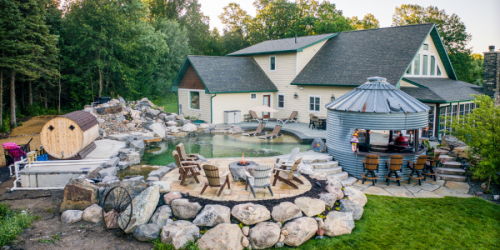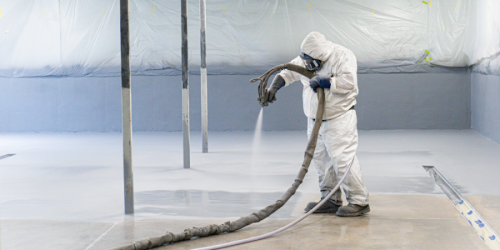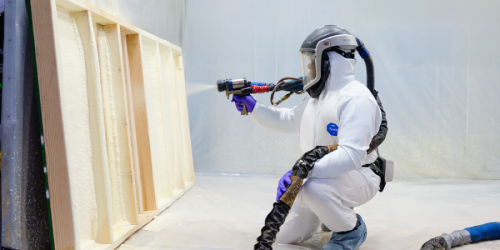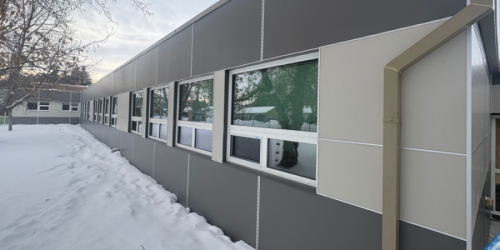Q&A Forums
Water Blown Closed cell? Post New Topic | Post Reply
| Author | Comments |
|---|---|
|
Dave Strnad
Posted: Aug 23, 2006 07:42 AM
|
Water Blown Closed cell?
Ok, not trying to start a heated debate here. I would like to know how water blown closed cell can have an r-value higher than that of air (3.5). Unless I have it wrong, it is the voids in a material and the gas that fills it which gives it insulative properties. air= R3.5 245a= R7. I'm just trying to understand. I would like to try some different products, but I am very frustrated with the manufactures/sales reps, etc. They say things that seem to defy logic and physics, and simply explain it with "just because". I need to understand why and how something works, I can not take the answer because I said so. Any thoughts? Also I was interested in biobased products but I had seen where the soybean associaction was giving a $35,000 grant to manufactures for each state that they had distributers in. This in turn created a lot of fly by night operations getting in and out of the business, changing names. Has anybody else heard anything about this? It seems to make sense because there are a lot of dead websites and phone numbers for the soy based products. Any way not trying to bash anyone just was wondering if anyone else heard of this?
|
|
Melvin Chandler
Posted: Aug 23, 2006 10:55 PM
|
I don't see how it could work and am like you in regards to just because. Have them sign off on it or give you 3rd party testing reports. |
|
Dave Strnad
Posted: Aug 24, 2006 06:58 AM
|
I guess that is my point. I don't care if they do sign off on it. In fact that is the impression that I have got from several manufactures in regards to issues for water blown and 245a blown. They are quick to offer letters, etc. backing the issue but offer no real explanation. Just having the manufacture sign off on it doesn't answer any questions and doesn't remove me from responsibility especially if I know there might be an issue. Any way not to get all worked up but does any one know how water blown foam works? Is there something other than air is the cells? If so what? If not how are they getting an r-value of more than 3.5? Doesn't seem possible. |
|
SprayFoamSupply.com
Posted: Aug 27, 2006 06:59 PM
|
Hi Dave, I have been wanting to reply to this post for a while, just have been extremely busy. There are so many people looking to get into this business and there is so little support at times. Water blown foams have about 80% carbon dioxide trapped in the cells and like 245 foams, the gas is trapped under negative pressure. Depending on where you read, still air has an r-value of between 3 and 5, so long as the air space is 1/2" or less. Air in a vaccuum has an even higher r-value. The problem is that when the air space is more than 1/2", convective currents begin to occur lowering the r-value. That is why small voids common in open cell foams are not an issue. If you watched the discovery channel on insulation, I believe they said that there was no thermal conduction in the vaccuum of space, only radiant heat. The main difference between water blown and 245 blown closed cell foams as far as the raction, is the exotherm, or amount of heat generated during the reaction. 245 boils at 59 degrees and water at 212. There is alot more heat generated during the reaction of of a water blown foam. I have had my IR thermometer out while spraying. With a 1.5-2" pass, the reaction temp gets up to about 225 degrees. Going with a thicker pass, 3" and the reaction temp gets hotter. I've had it all the way up to 290 degrees. The operating temps of the preheaters and hose heat makes a big difference. I prefer to spray aroung 120, but I get more charring. 110 is better as far as charring, but drips a little more than I like. When you have higher reaction temps, with water blown, what happens? As the foam cools, and the gas trapped in the closed cells cools, the molecules slow, and the foam wants to shrink. However, the foam is hard, thus creating the vaccum inside of the foam. With 245 foams, the reaction temp isn't as high, so the delta T during curing is less, and less of a vaccuum is created, although the blowing agent is trapped. I have been spraying some new lower density closed cell water blown foam. Let's think about that, lower density means the millions of tiny bubbles are slightly bigger. With more heat of a water blown, there is some extra shrinkage. If I am spraying studwalls, and I spray the sheathing only, allowing only the rising foam to contact the studs, there is some pull away the next day as the foam shrinks just a little bit. If care is taken to spray liquid foam onto the sides of the studs, as well as the sheathing, there is no problem. Dave, discussion is a good thing, it is how we all learn. Please ask as many questions as you like, I will do my best to answer them. I will gladly share all that I have learned in the past year. Knowledge is power, and like I said, there is far too little support in the industry. On another note, I am looking to buy a heat flow meter so that I can conduct alot of my own testing. I am in this for the long haul and would like to be able to test foams r-value on my own. I would particularly like to test some 245 foam after1 month, 3months, and 12 months, etc. George |
|
Dave Strnad
Posted: Aug 28, 2006 07:08 AM
|
George, Thank you for your reply. I did not know that water blown had a higher ratio of carbon dioxide. In fact I had reps tell me it was just air. Is it true that water blown and 245a blown have an indentical structure when cured and only the gas in the bubbles are different? I have seen paint that is supposed to reflect radiant heat, would that give spf even greater insulating ability? Or does spf stop radiant heat, I was under the impression that it did not. |
|
SprayFoamSupply.com
Posted: Aug 29, 2006 07:27 PM
|
Dave, I can send you a piece of foam so that you can compare it with some 245 foam, they look the same to me. Not sure about that paint, maybe if you painted the sheething first so that the radiant barrier was on the outside? In AZ at the SPF conference, there was one class where they said that foam helps with all types of heat transfer; conduction, convection and radiant. I don't remember the specifics. George |
|
Gerry Wagoner
Posted: Sep 03, 2006 09:54 AM
|
Dave, spray foam is a powerful barrier against radiation, conduction and convection. It provides the whole package. The only scenario where radiant paint would help is in a no-insulation / fiberglass insulation assembly. have a great day, olger |





























